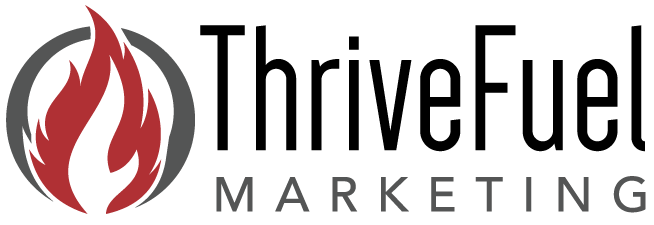If you’re a local digital marketer, or marketer of any kind, offering national or regional brands, you are probably aware of co-op advertising. And if you aren’t, you need to be.
Manufacturers provide co-op advertising reimbursements to retailers to share the cost of local advertising. These programs vary wildly as can their value. However, if you’re not utilizing co-op dollars to help pay for your marketing and advertising expenditures, you’re probably leaving some real money on the table and missing opportunities.
Some co-op programs pay media companies and agencies directly while others allow the retailer to accrue co-op dollars and use them for additional inventory. Regardless of the details, these programs are almost always a win for the store owner.
Until recently, co-op programs were limited to traditional forms of advertising: newspapers, radio, broadcast or cable TV. However, the shift in recent years to digital advertising has been as dramatic as the overall advertising spend. In fact, Ford Motor Company requires their local market dealers to use at least 50% of their co-op dollars on digital media, and it has for years. Ford isn’t alone in this regard. Chrysler, General Motors and other manufacturers have modified their programs to encourage digital spending. It should come as no surprise that most consumers start their car buying journey online.
This trend isn’t limited to the automotive sector. In just the past few years, our team has worked with local businesses in Victoria, Texas and beyond to help get their digital marketing campaigns paid by Valspar, Tony Lama, Chamilia, Wrangler and others.
There are thousands of brands with funds available for digital advertising support. The large national retailers have internal teams to ensure that all co-op dollars across all product lines are used within each local market, in addition to their existing marketing budgets.
As a local business owner, you need to compete with these retailers. Fully utilizing manufacturer co-op programs can help level the playing field. Just make sure you use the available funds wisely. To ensure the best strategy, you should work with a team that understand co-op and can research your individual programs and brands.
Reach out today and we’ll work directly to identify your specific co-op opportunities. We do all of the heavy lifting:
- Analysis: We analyze existing co-op programs across all of your vendors.
- Execution: We build your advertising creative units. This includes display, social media posts and videos, email campaigns, among any other relevant creatives.
- Compliance: Your ad units are pre-approved by your vendors and we verify compliance. We know you don’t like surprises, and neither do we!
The only thing you have to lose are those expensive advertising bills! Our co-op services are completely free to use. Let us help you stretch your available marketing budget!
Co-Op Advertising FAQ
What Is The Purpose of Co-Op Advertising?
A co-op advertising program is a partnership between both the manufacturer and the retailer to share in the cost of advertising at the local level.
Also known as “cooperative advertising” because of the concerted effort between both parties, co-op advertising is an effective way to expand the advertising budget without increasing out-of-pocket expenses, allowing the retailer to advertise more often.
Can I use Co-Op Funds For Digital Marketing?
Not just for traditional media, co-op advertising methods are growing and expanding into the digital age to reach modern shoppers and key demographic groups.
Manufacturer brands are actively updating co-op programs to encourage the use of digital media. Co-op plans for digital media may include click-to-purchase ads, email marketing, social media ads, online banner advertising, search engine marketing (SEM), search engine optimization (SEO), outdoor advertising and kiosks, Yellow Pages Online and more.
How Does Co-Op Advertising Work?
The accrual balance is the money earned by a retailer to be used for advertising, and they are earned in direct correlation to the products purchased from the manufacturer.
The accrual is based on a percentage of sales with a product line, and the accrual percentage varies by manufacturer and sometimes product. Though accrual percentages can vary widely, the average is roughly 3% of sales.
The accrual period is the time-frame that the manufacturer has set during which the retailer can earn co-op advertising funds. Accrual periods will differ from plan to plan, ranging from the previous year’s business to the current year’s business to rolling six-month and quarterly periods.
The performance period is the time designated in which a dealer’s co-op money must be spent. Eventually, all co-op advertising funds expire if they are not utilized.
Many retailers, vendors and dealers have already earned co-op dollars with the manufacturers that they sell the most of, but unfortunately, the vast majority of local retailers have never heard about co-op advertising and all the benefits it provides.
How Is The Advertiser is Reimbursed?
In co-op advertising, a supplier reimburses the advertiser for the ad expenditure in the form of a credit memo, check or product. However, most manufacturers will reimburse their retailer in the form of a credit toward the retailer’s future purchases.
What Brands Utilize Co-Op Advertising?
This can be tricky. One sure way to make the most of your Co-OP Advertising and identify brands that offer a co-op program is to reach out to your ThriveFuel representative for a C0-Op audit. We’ll help you make sense of these sometimes complicated programs and get the most bang for your Co-Op buck.
What Is A Bonus Co-Op Program?
A Bonus Co-Op is a limited-time offer where a co-op advertising program offers a higher reimbursement level, accruals or other incentives for meeting performance requirements such as advertising a promotion or buying additional product.
Additional co-op funds are often available if a retailer or dealership is celebrating a special major event, such as a significant anniversary. So it never hurts to be creative and think outside of the box, and a Co>Op Connect Specialist is always happy to help you find additional co-op offers and incentives as well.
What Are Brand Guidelines?
Manufacturer brands will have an Advertising Standards Document, which is essentially a manual on how to use a brand. These guidelines will be referenced by anyone who touches a brand internally or externally. Overall, brand guidelines provide direction and keep a brand strong, consistent and cohesive.
All brands will have specific requirements related to the appearance of the brand logo, the advertised product, ad copy and occasionally a minimum advertised pricing component. Most major brands will have brand guidelines that will detail the necessary components in any dealer promotion.
What Ad Materials Are Used?
Every brand will be unique in their ad creative, messaging and standards, and the brand’s image library will help you to quickly and easily create advertising materials that will be in brand compliance.
The great thing about co-op advertising is that most manufacturers provide all of the advertising materials so that their ads will be in accordance with their company’s brand guidelines and standards.
The manufacturer’s image library or graphic file will contain the most up-to-date ad templates, logos, scripts and brand imagery. Some brands may provide a company portal to access their brand assets.
However, if the brand does not have an image library or updated graphics, we can help find or even create the art pieces for you!
The Prior Approval Process for the Ad
Getting the Prior Approval from the manufacturer before you run the advertisement is usually required, but it is always recommended as a safeguard to all involved.
If a co-op advertisement is run without the manufacturer’s Prior Approval, the ad may not meet the company’s advertising standards and therefore, not be eligible for reimbursement – something we all want to avoid!
We submit the ad to the manufacturer for review and depending on the manufacturer’s specifications, the ad may need to be submitted by email, the manufacturer’s database or through another channel.
How Do We Get You Reimbursed?
Now that your ad has run, it is time to help ensure you get reimbursed. It is also important to be aware that the Claim Period is the time during which co-op claims can be filed, which is typically within 30 to 90 days of the ad date.
We compile and package your advertiser’s co-op claims and maintain control over the begin-to-end-process, providing everything back to the manufacturer to ensure reimbursement.
How Do I Begin?
ThriveFuel can help you get the most out of your co-op advertising and take all of the headaches and complexity out of the equation. So if you have any questions or would like to discuss your Co-Op opportunities reach out today! We are always happy to help!


